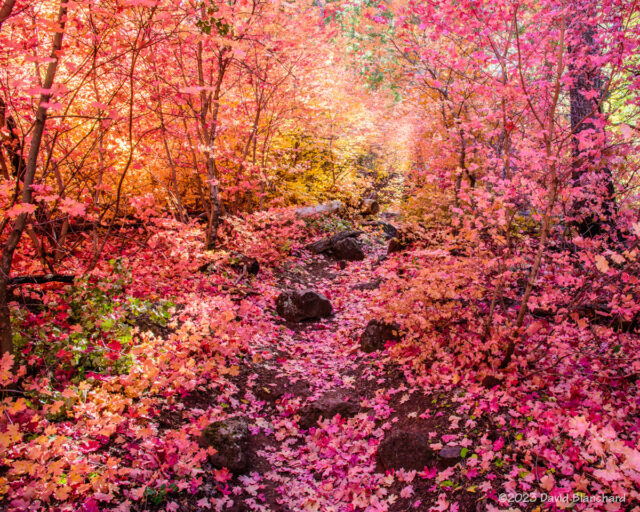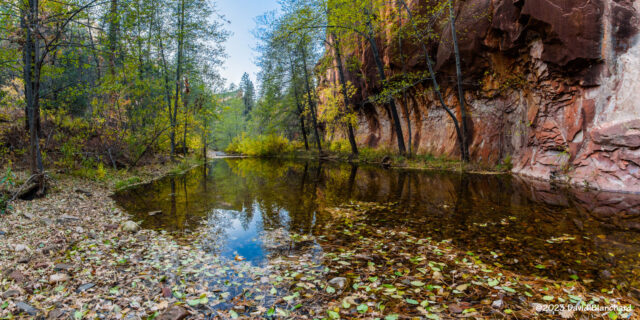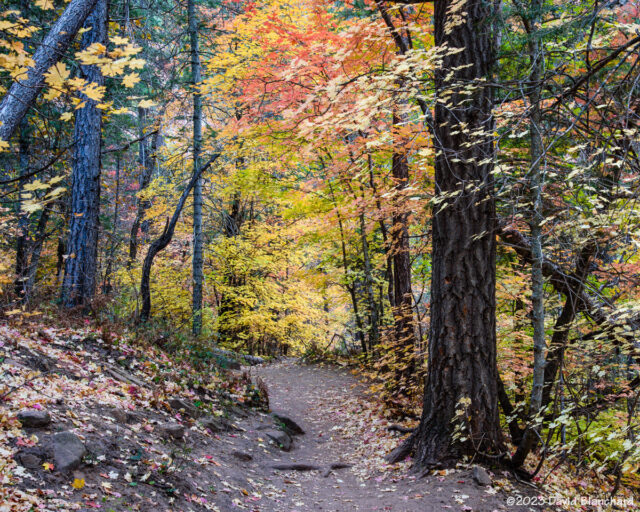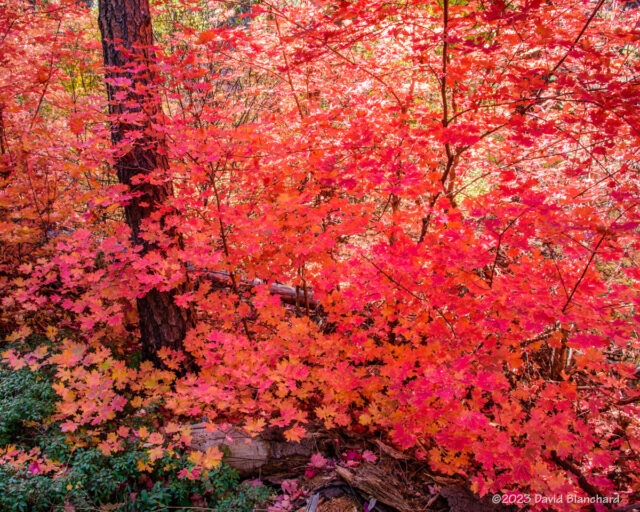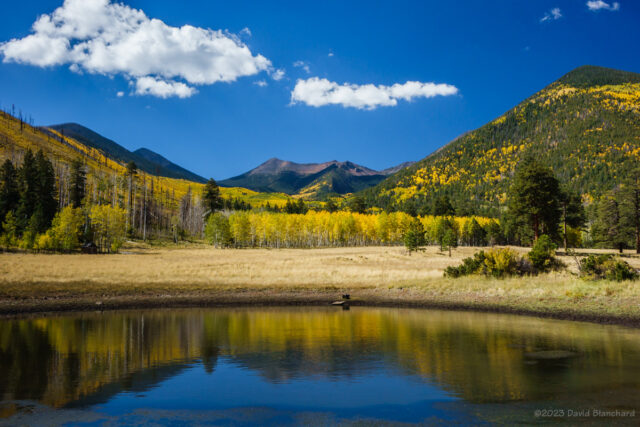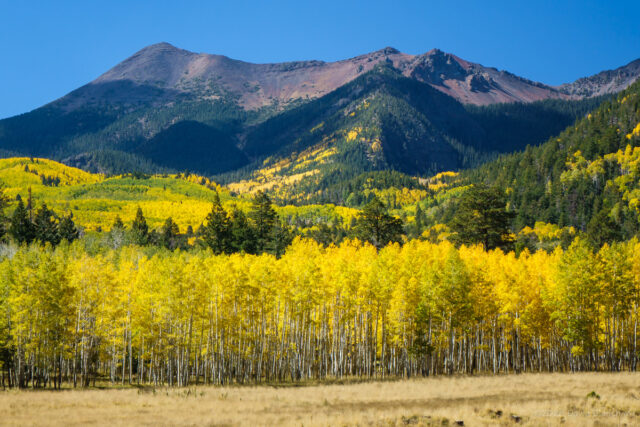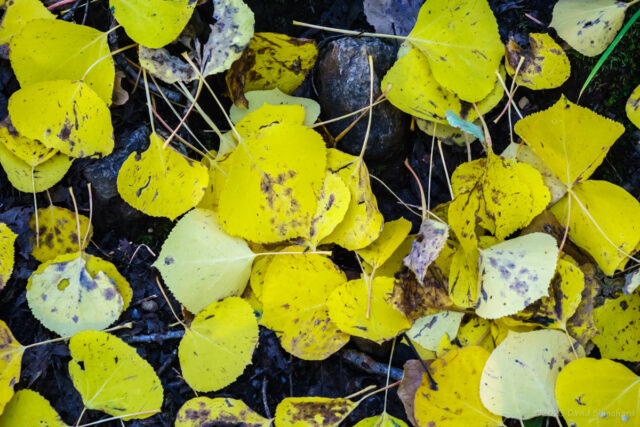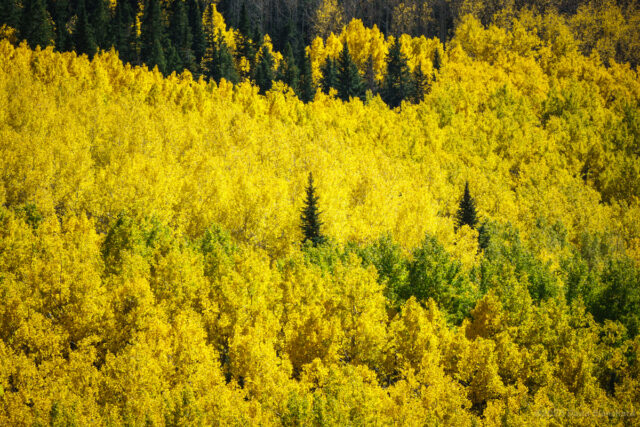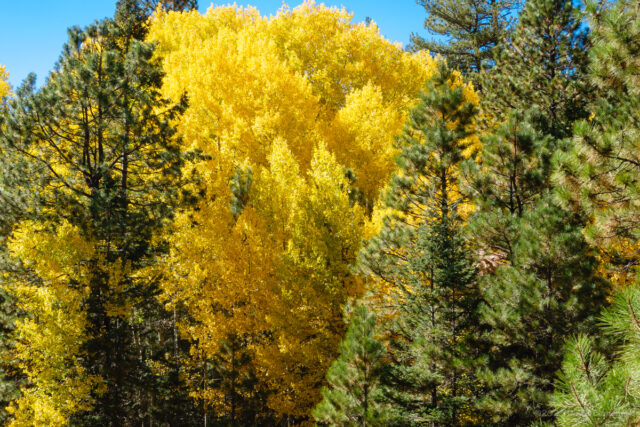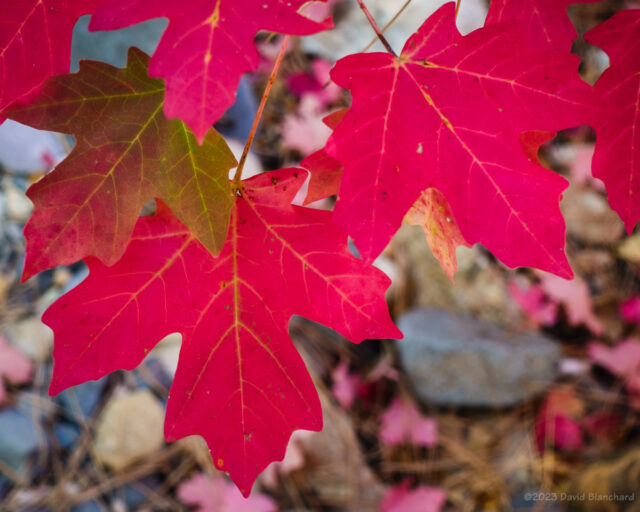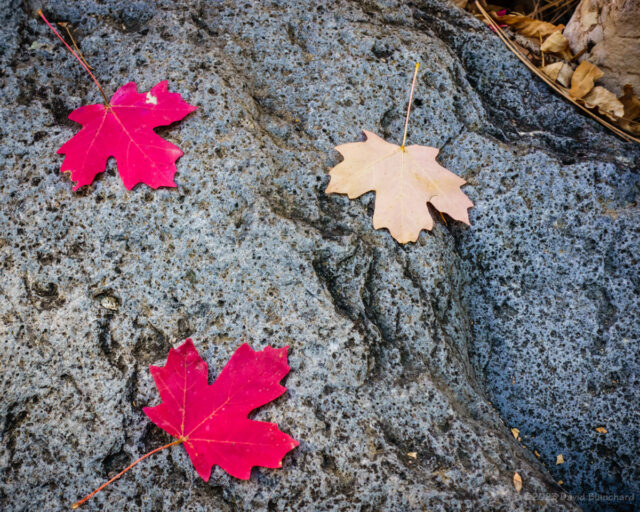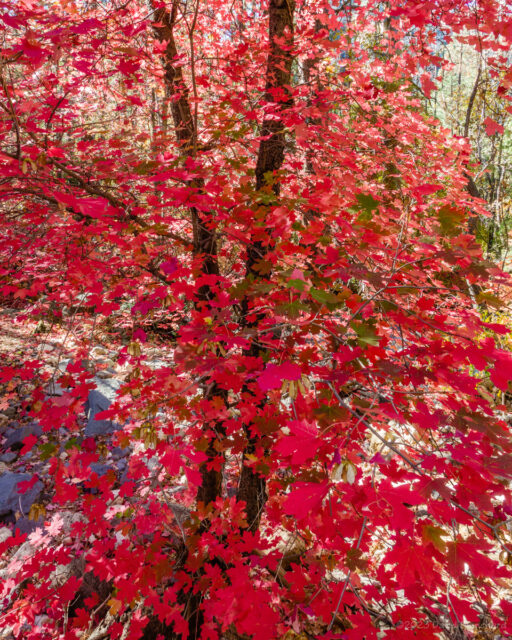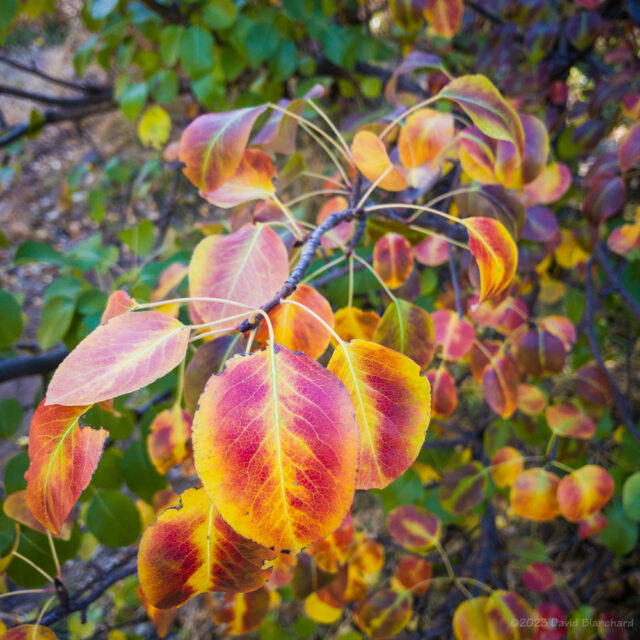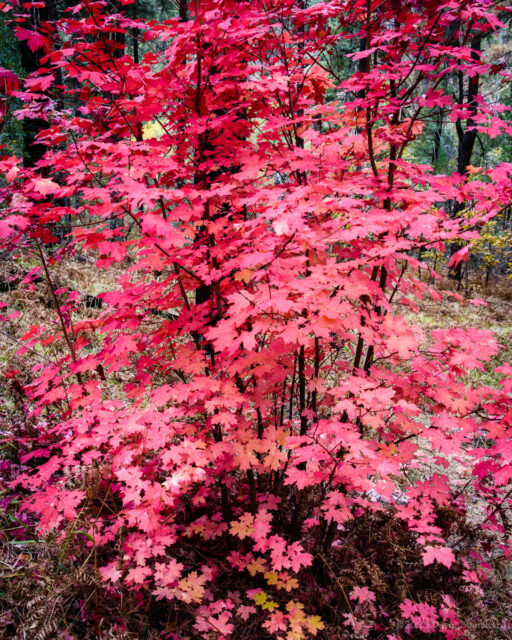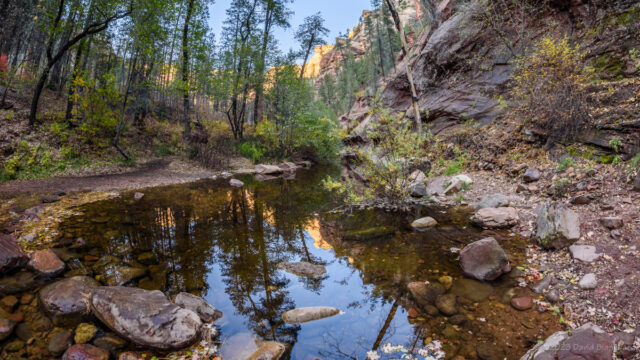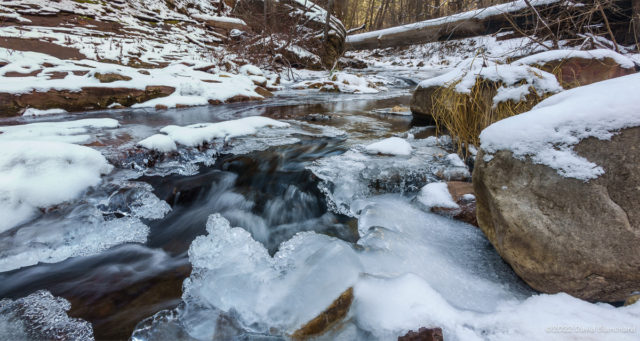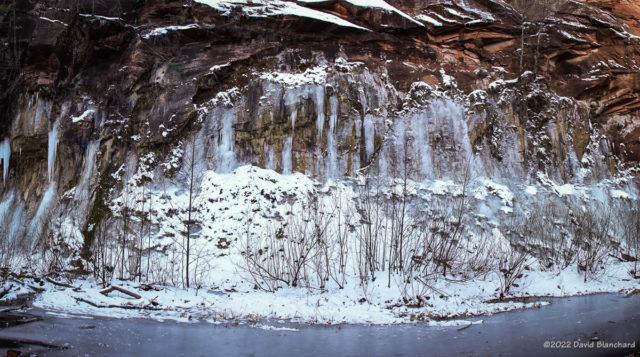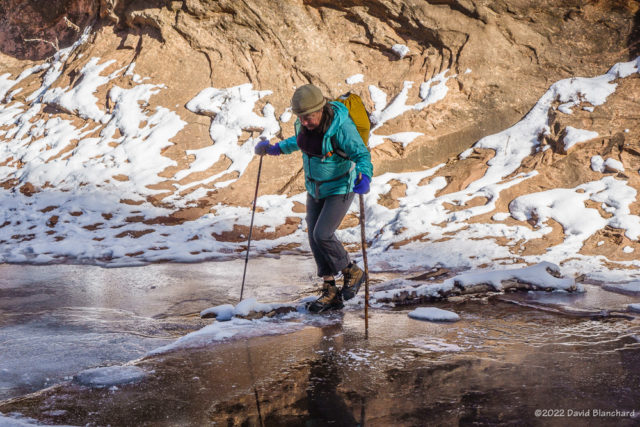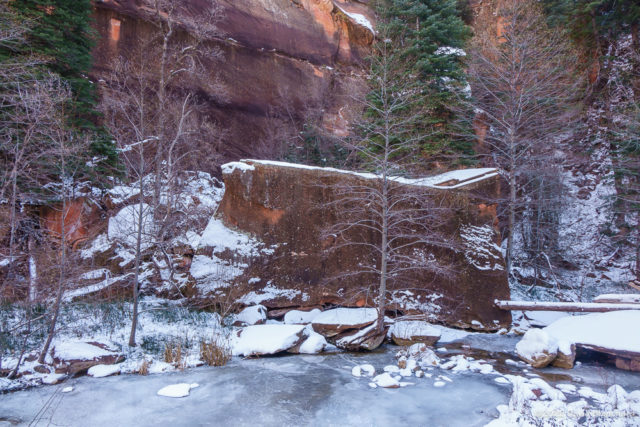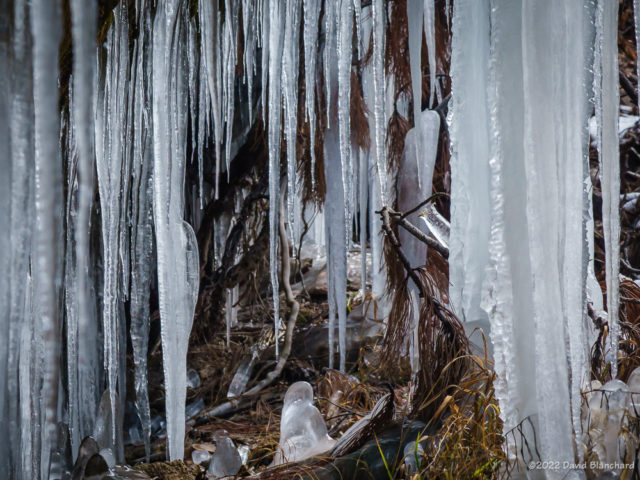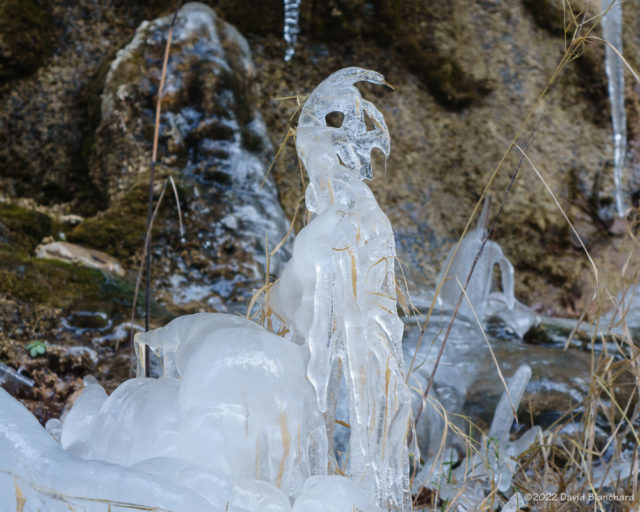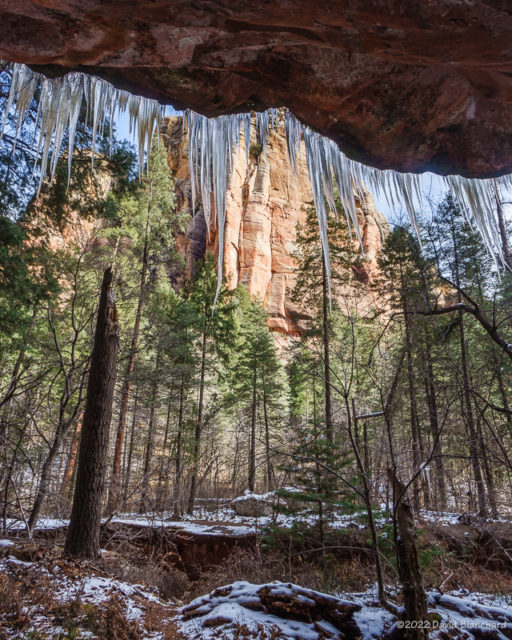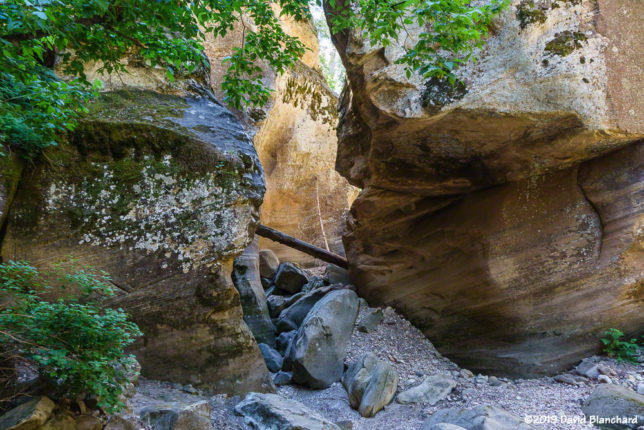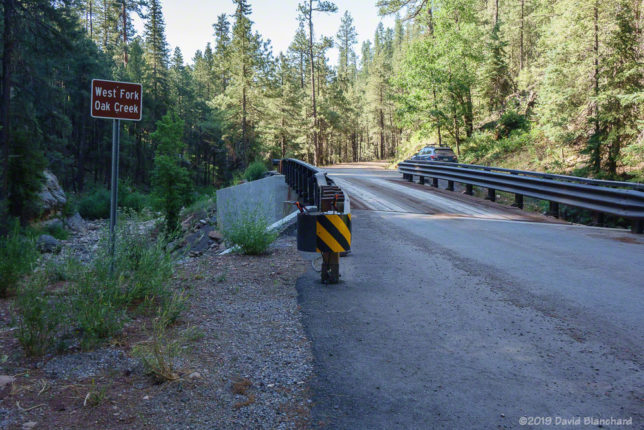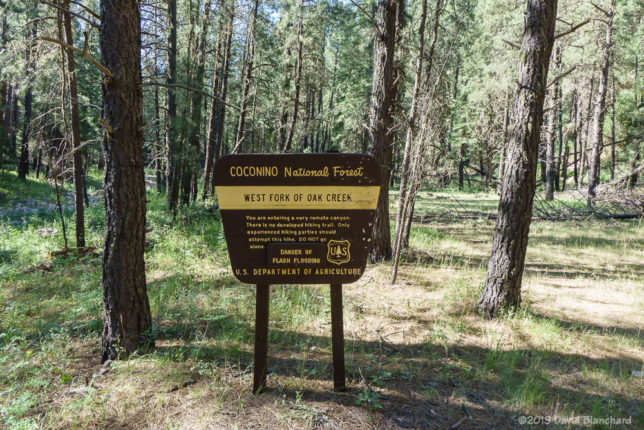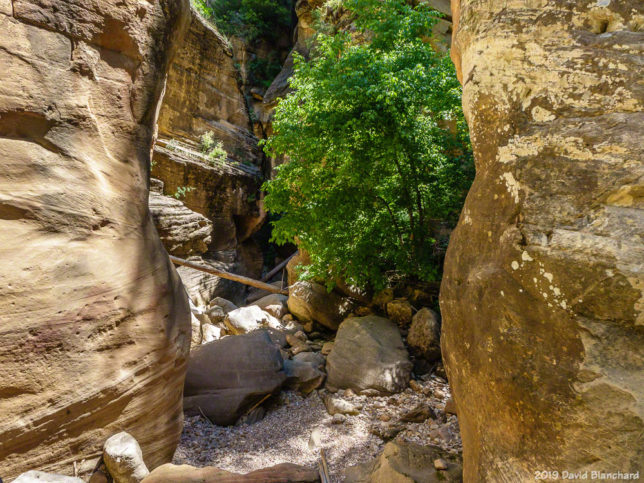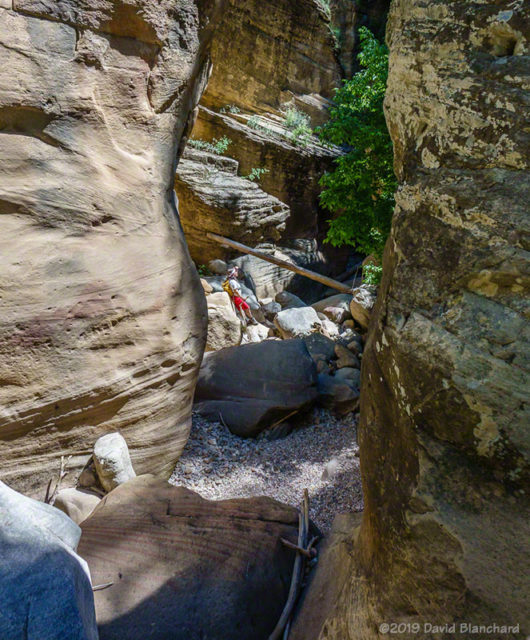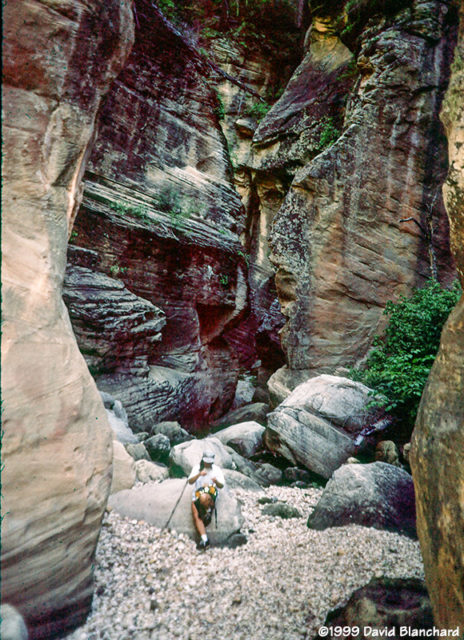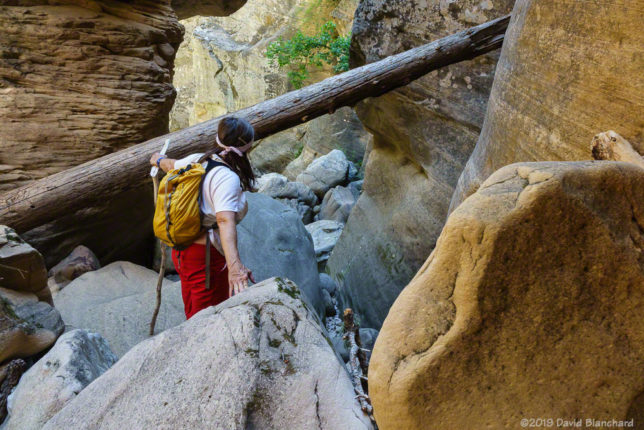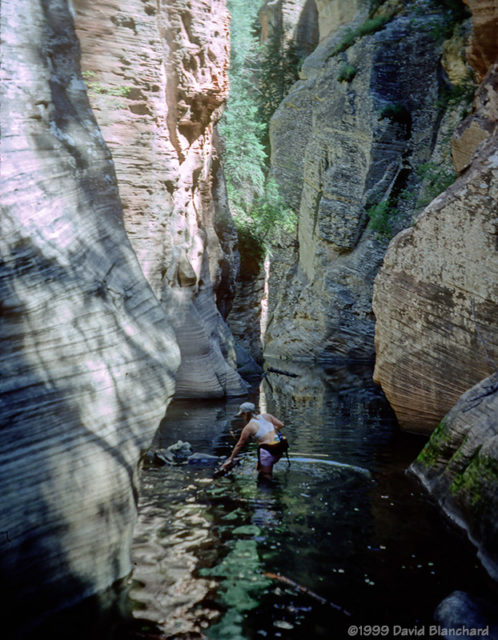
A week of cold overnight temperatures has allowed ice to form on West Fork of Oak Creek–so this was a good time to hike the canyon. Winter visitation is fairly light so getting a parking spot is easy and we encountered only a handful of hikers on the trail. So it is definitly more enjoyable in the winter.



There was ice on the creek but there was also open areas of running water. It required some care making the numerous stream crossings to step on logs or rocks and not to put too much weight on the ice. A big difference from previous winter hikes was the lack of snow. Although we carried foot traction devices (i.e., Kahtoola microspikes) we did not need them.
At the “Subway”, a narrow, high-walled section of the canyon with wall-to-wall water, the ice was probably not thick enough to ensure safe passage through this section. Some of it was firm but there was still open water in the middle of the channel. Opting for safety, we let this be our turn-around spot.
There are several cliffs in the canyon with significant water seeps. Water drips from the large icicles and refreezes at the ground creating free-standing ice stalactives as well as encasing grasses and small stems in strange and bizarre shapes.
There are several cliffs in the canyon with significant water seeps. Water drips from the large icicles and then refreezes at the ground creating free-standing ice stalactites as well as encasing grasses and small stems in strange and bizarre shapes.


I looked back at the many times we have done this in the winter and the conclusion that I can draw is that it requires multiple nights of sub-zero temperatures (generally -5 to -10°F or colder) to produce safe ice. The recent cold temperatures were single-digit readings but above zero. Not cold enough.
——————————————————————————————————————————
Here are some older entries about hiking West Fork in the winter:
